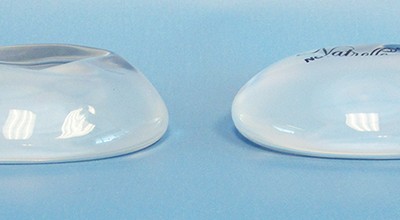
Incision Location
Do I have a say in where the incision is located?
The most important priority when choosing the location for the incision is that the surgeon has optimal control of the surgical procedure; the patient’s preference would be the second priority. The best approach for breast augmentation may vary according to the physical characteristics of the breasts and chest, the type of implants used, and whether a breast lift is being performed at the same operation. The most favorable incision provides the surgeon with control of the operation, minimizes tissue trauma, minimizes the risk of bleeding and nerve injury, does not affect the ability to breast feed, and allows for easy implant insertion. No matter which location, an emphasis is placed on making the incisions as small and inconspicuous as possible.

Inframammary Incision – The inframammary incision is made in the skin fold beneath the breast. This affords a direct, efficient approach for dissection and implant placement, provides excellent exposure to all areas of the pocket, does not traumatize breast tissue, and is located away form the nipple-areolar complex. In addition, there is a low risk of altering nipple sensation or the ability to breast feed. The resulting scar is concealed within the skin crease under the breast and is covered by all types of clothing and swimwear. The inframammary incision heals well with minimal visibility; the incision is not visible when standing, but may be visible when you are lying down. The inframammary approach is the most popular approach for primary breast augmentation, and is often used when re-operation is required. The inframammary incision allows for easier insertion of silicone gel implants, especially the Natrelle 410.

Inframammary scars 2 years and 4 months after surgery
Periareolar Incision – The periareolar incision is curved along the edge of the areolar pigment. Because the periareolar incision is centrally located on the breast, this approach allows equidistant access to all areas of the implant pocket. The diameter of the existing areola must be large enough to accommodate the length of the incision required; and that is especially true for silicone gel implants. The periareolar scar is covered by clothing and swimwear. Because the areolar skin is thin, this incision heals favorably. The incision is visible when standing, so widened or raised scars may be as well. The incision may also be more noticeable it is violates the natural color transition between the areola and breast skin. For women with minimal breast development and a tight skin envelope, the periareolar incision may be less conspicuous than an inframammary approach. Sometimes concerns are raised that the periareolar incision is associated with a higher incidence of altered nipple sensation and a slightly higher risk of interference with breast feeding. If the approach for the pocket creation does not divide the breast tissue then there should be no impairment of breast feeding. Periareolar incisions are associated with a higher incidence of capsular contracture.
NEXT TOPIC: Breast Implant Pocket Location
What is the Gel-to-Shell Fill Volume Ratio?
Each round silicone gel-filled breast implant is comprised of a silicone elastomer shell which contains the silicone gel filling. Silicone gel breast implants are filled by the manufacturer with a moderately cohesive (responsive) silicone gel. If you look carefully at...
Do I need to change my breast implants after 10 years?
During breast augmentation consultations women frequently make a comment, or ask a question, about having to change their breast implants every 10 years. The comment or question is usually worded in such a way that they have the understanding that breast implants need...

